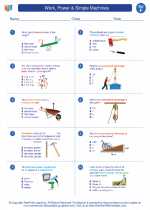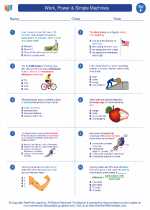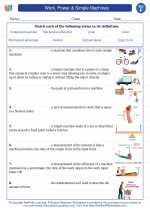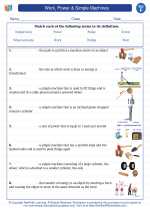Renewable Energy
Renewable energy is energy that is collected from renewable resources, which are naturally replenished on a human timescale, such as sunlight, wind, rain, tides, waves, and geothermal heat. Unlike fossil fuels, renewable energy sources are abundant and have a much lower environmental impact. Here's a study guide to help you understand renewable energy:
Types of Renewable Energy Sources
- Solar Energy: This is energy harnessed from the sun using photovoltaic cells to convert sunlight into electricity.
- Wind Energy: Wind turbines capture the kinetic energy of the wind and convert it into electrical power.
- Hydropower: Electricity is generated by harnessing the energy of flowing or falling water.
- Biomass: Organic materials such as wood, agricultural residues, and waste are used to produce energy.
- Geothermal Energy: Heat from the Earth is utilized to generate electricity or for heating and cooling purposes.
- Ocean Energy: Energy from the ocean's tides, waves, and temperature differences can be harnessed for power generation.
Advantages of Renewable Energy
- Reduces greenhouse gas emissions and air pollution
- Decreases reliance on finite fossil fuels
- Promotes energy independence and security
- Creates job opportunities in the renewable energy sector
- Can lead to lower energy costs in the long term
Challenges of Renewable Energy
- Intermittency: Some renewable sources, like solar and wind, are intermittent and dependent on weather conditions.
- Energy Storage: Developing efficient methods for storing renewable energy is a significant challenge.
- Initial Costs: The installation of renewable energy systems can have high upfront costs.
- Land Use: Large-scale deployment of renewable energy technologies may require significant land area.
- Technological Development: Ongoing research and development are needed to improve the efficiency and reliability of renewable energy systems.
Impact on the Environment
Renewable energy sources have a much lower environmental impact compared to fossil fuels. They produce little to no greenhouse gas emissions and contribute to cleaner air and water. However, the construction and maintenance of renewable energy infrastructure can still have some environmental impact, such as habitat disruption and potential land use conflicts.
Conclusion
Renewable energy offers a sustainable and cleaner alternative to traditional energy sources. It plays a crucial role in mitigating climate change and promoting a more sustainable energy future.
Remember to review the various types of renewable energy sources, their advantages and challenges, and their environmental impact to gain a comprehensive understanding of this important topic.
.◂Science Worksheets and Study Guides Sixth Grade. Work, Power & Simple Machines

 Worksheet/Answer key
Worksheet/Answer key
 Worksheet/Answer key
Worksheet/Answer key
 Vocabulary/Answer key
Vocabulary/Answer key
 Vocabulary/Answer key
Vocabulary/Answer key
